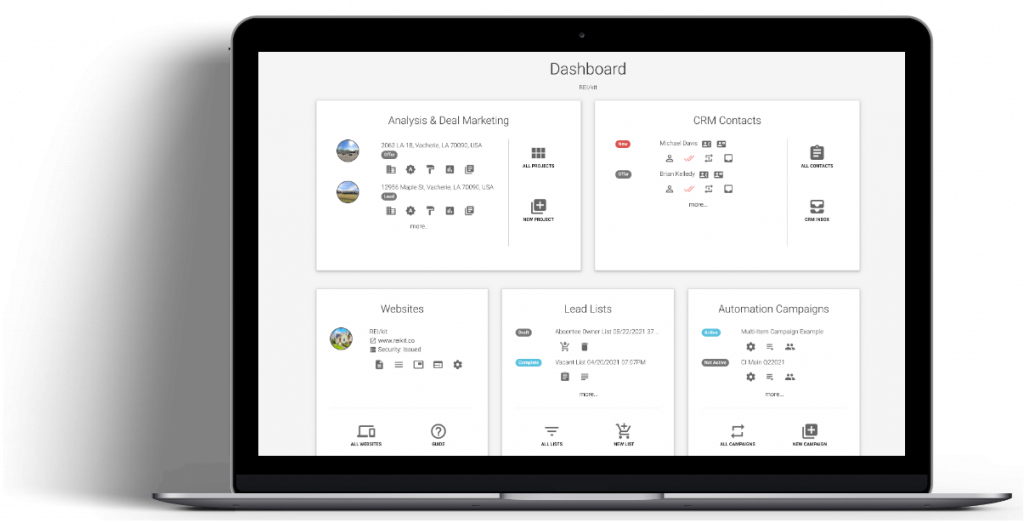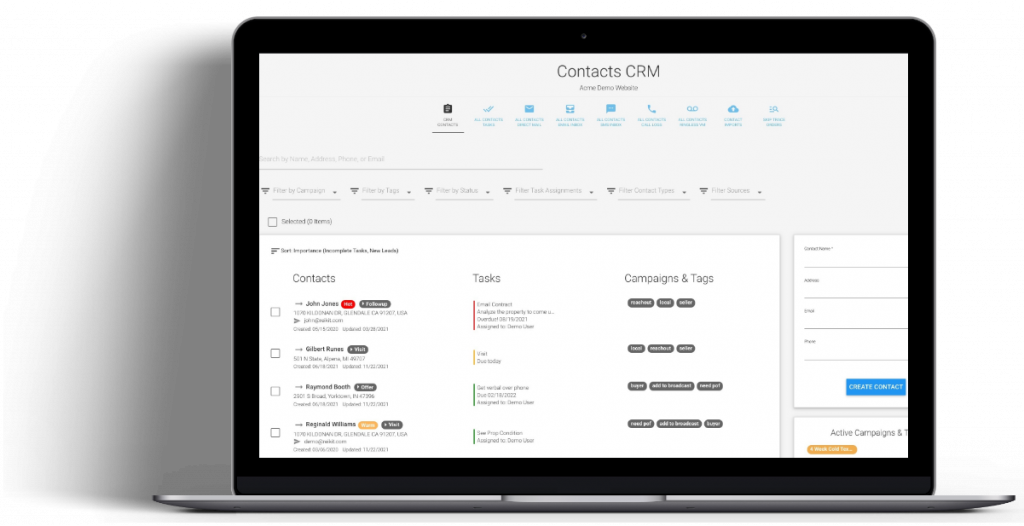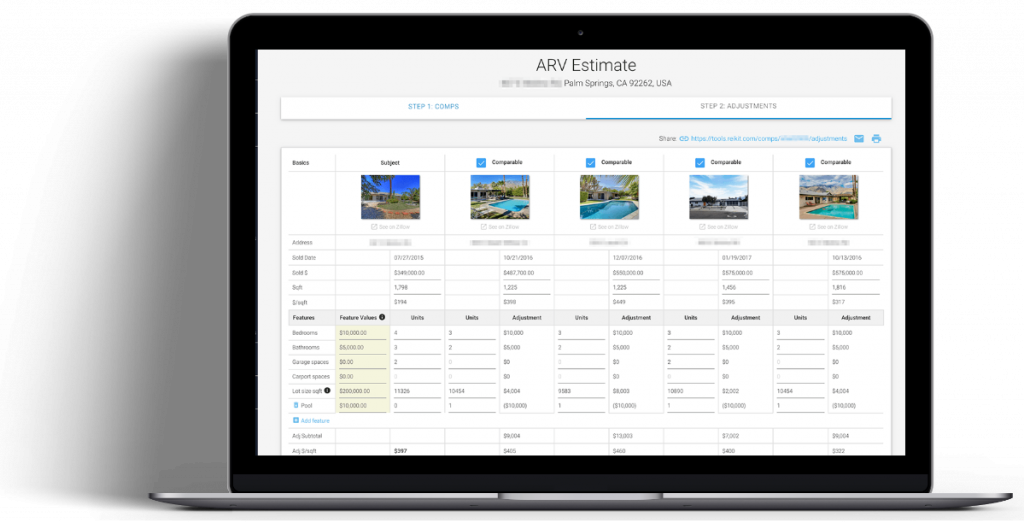
This article has been updated to reflect the best omnichannel marketing tactics in a post-10DLC world.
If you want to multiply your deals, check out the new article here:
5X Your Deals: The NEW Omnichannel Marketing Playbook for Real Estate Wholesalers (2024)
Real estate wholesalers have special challenges when marketing to seller leads. Those investors have the hefty job of convincing leads to part with their most valuable asset, their home.
In order to accomplish this goal, their marketing strategy must be tightly dialed in to be effective: it must first reach the prospect, then be seen by the prospect often enough, reach them at the right time, and finally get them to take action.
In the past, a typical marketing strategy would have you pick a marketing channel, and try to go all-in on it. If you spend enough money, this approach will work for any marketing channel, be it SMS or direct mail.
Unfortunately, this strategy is incredibly inefficient in terms of your marketing budget and won’t allow you to extract the full value of your prospect list.
What if you knew the secrets to the exact marketing channels, content strategy, and timing that could help you dial in your marketing and 5x your deal flow for the same marketing spend?
In this post, I’ll reveal the secret ingredients of a marketing strategy to do just that. I will go over:
-Where are your prospects?
-Why your channel selection matters
-What you say matters
-How (and how often) you say it matters
-When you say it matters
Finally, I’ll put it all together to show you the ideal combination of marketing channels that will save you both time and money to get the absolute most value out of your marketing budget.
Let’s get started.
Where are your prospects?
Your prospects attention is focused on different mediums throughout their day.
-They are at their homes reading their snail mail to pay their bills
-At work and on their computers checking their email
-On mobile devices sending text messages and making calls or checking facebook
-Or all of the above, at the same time!
In fact, we are all now constantly multi-tasking, which ultimately results in highly fragmented attention.
A recent study found that the average human attention span has fallen from 12 seconds in 2000 to 8 seconds today.
To put that in perspective, researchers measured and found that a goldfish has an average attention span of 9 seconds.
So, not only do you have to grab your prospect’s attention in just 8 seconds, but you are also competing with all of the other communications that the prospect is receiving across text messages, emails, voicemails, and postal mail.
Clearly, where your prospects are and how you reach them matters if you want your message to cut through the noise.
Your marketing channel selection matters
Why your channel selection matters
For your message to be seen and heard, it’s important to understand the strengths and weaknesses of each of the five major marketing channels that investors use.
I explain just that in a previous article where I give detailed breakdowns of the pros and cons of each: Best Marketing Channel for Real Estate Investors (Hint: There Isn’t Just One)
In that post, I concluded with the following observations:
-Email is best from a cost perspective
-SMS and RVM have excellent reply rates
-Direct mail has the highest deliverability
-Cold calling moves the deal along
The main takeaway from these conclusions?
There is no one best channel anymore.
That brings me to the single biggest problem of typical single-channel marketing.
The problem with single channel marketing
Traditionally, marketers pick a single place to market to their prospects based on what is popular at the time.
Then they keep sending marketing messages using that same channel, regardless of its effectiveness on that particular prospect.
Unfortunately, that single channel cannot be optimized for every dimension of marketing performance: reach, deliverability, consumption, and cost.
By choosing a single channel, marketers can only optimize for just one of those dimensions.
Let’s take a look at a few examples of how focusing on a single channel limits your marketing performance.
First let’s talk about reach.
Reach
A typical skip traced contact will have some, but not all, contact information available on them.
The contact may have a physical mailing address, but no email address. They may have a phone number, but not a mobile number.
If your single channel is email, and only 50% of your contacts have email addresses, then you can only market to half of your prospects.
Ultimately, you are missing a huge opportunity to reach all of your prospects, unless if you were to use other or multiple marketing channels.
Next, let’s talk about deliverability.
Deliverability
There are many impediments to getting your message delivered.
One is that, thanks to extended warranty calls, telecom deliverability has become a focus of local, statewide, and federal jurisdictions.
This focus has resulted in the implementation of more and more restrictive laws and regulations regarding marketing communications via telephone.
If you rely on SMS as the only channel to reach out to your prospects, your message may never get to them because of those telco filters.
Again, you miss an opportunity to market to all of your prospects, had you used more diverse marketing channels.
What about opens, reads, and replies?
Consumption
Each contact has their own preferred way of communicating, whether that is via text, a phone call, voicemail, snail mail, or email.
Furthermore, when a prospect receives the same marketing message through the same channel over and over again, they tend to begin to ignore the message.
As a result, marketers typically see an erosion in the effectiveness of any single marketing channel over time as a matter of course.
Finally, let’s consider the cost.
Cost
Later on, I’ll talk about the rule of thumb that on average you need to have your message seen by your prospect at least five times before they take action.
In regards to cost, your prospect’s value increases as they move through your sales funnel, each time that they see your message.
When sending the first of your 5 touches, when they have not yet heard of your brand, your prospect’s value is very small as they are not yet qualified.
Then, as you send more messaging, they learn about your brand, and come to trust it, and become interested in your solution to their problem. Over the span of your your prospect’s interaction with your message, their value to you increases.
Since your marketing budget is not infinite, if you are using the most expensive marketing channel to qualify your prospects, then you are spending a large amount of your marketing dollars on prospects that have very little value.
This approach prevents you from reaching more prospects who are more valuable because they are more likely to convert.
As you can see, any single channel might only be strong in one dimension (reach, deliverability, consumption, cost), and by focusing on a single channel, you’ll never extract even a fraction of the potential value from your lead marketing.
So what can you do to overcome the limitations of a single channel and increase the effectiveness of your marketing 5X?
Omni-channel marketing to the rescue
Omni-channel marketing overcomes most of the shortcomings of single channel marketing, and gives you the ability to extract the most potential value from your contact lists.
How? By multiplying the number of channels that you are using, and taking advantage of each channel’s strengths.
For optimal cost, nothing beats email marketing, where each email costs a fraction of a cent — with the tradeoff being that you will only reach those prospects who have email addresses.
For the best reach, direct mail marketing is king, as in most cases you will have the mailing address of your prospect — but at the tradeoff of a high cost to reach them.
If you’re looking for reply rates, then SMS and ringless voicemail are the best tools to use — at a moderate price.
And finally, a warm call is the most effective way to move a deal along.
Combine channels and use their strengths
Combining all of these channels in a strategic marketing campaign, takes advantage of these strengths.
For example, you can use email to prequalify your list at the lowest possible cost.
You can then use SMS to improve on the lower reach and reply rates, to improve your pre-qualification at a still reasonable cost.
Next, you can send a direct mail postcard to ensure that every single person is reached, to those that didn’t opt out using less expensive marketing methods.
This kind of layering helps you capture your prospect’s interest and reach out to them in the way that they want to be reached out to.
Since each individual has their own preferences, you must market to them in every way possible to find the one that works on that individual, before their attention wanes.
Unless you use all five marketing channels on every contact, you may only have a one-in-five chance of reaching them, getting your message delivered, and getting a deal.
Now let’s dive into the foundations of a specific, relevant, and timely marketing campaign, by walking through the what, how, and when to market for ultimate marketing spend efficiency.
In this post, I’ll be using screenshots of an ideal omni-channel marketing campaign to illustrate the most important points.
What you say matters
Why does what you say matter?
Getting in front of your prospects via your marketing channels is only half the battle; you also have to convince them that you are worth talking to in the first place.
To accomplish this, whether in the real estate industry or any other, you must tailor your message to the recipient by identifying their pain points first.
In the case of a property owner, and depending on their circumstances, they may be motivated by some pain points more than others.
For example, you may be marketing to absentee property owners.
These sellers often want to get rid of their additional property because they are tired landlords wanting to retire, or they don’t want to pay multiple mortgages anymore, or they may dislike dealing with rowdy tenants.
By tailoring the content of your communications to reflect that you understand what they are going through, and that you come offering a helpful solution, makes it much more likely that they will respond.
It works the same for every type of seller that you market to, whether vacant motivated sellers, high equity, low equity, and so on.
It’s great to understand pain points, but how do you know exactly what your messages should say?
If only there was a practical, time-tested framework for understanding how to structure your marketing campaigns for maximum impact…
There is. It’s called AIDA.
What to say
There are four components necessary to convince the average person to buy what you’re selling, which for over a hundred years has been broken down into a single marketing formula called AIDA.
AIDA works on the premise that consumers move through a series of steps or stages that involve both thinking and feeling, to make a decision.
Breaking those stages down in terms of communicating with seller leads, you can see that they consist of:
Attention: capturing the seller’s attention by creating an awareness of your brand and of the solution that you offer
Interest: inducing enough interest in that solution as to encourage the seller to start researching whether it is right for them
Desire: eliciting an emotional response that results in the desire to move forward with your solution
Action: propelling the seller to take the next step of contacting you or getting an offer on their property
How you say it matters
Why does how you say it matter?
The “why” behind the content of your message should align with hitting the appropriate pain points that I mentioned above.
By making it clear that your solution solves XYZ problem, the seller can then self-identify whether that is indeed their problem, and get them curious about what you are offering.
You should also increase the intensity of your message over time. The tone of your introductory message should be more relaxed than the tone of your call-to-action message.
When you say it matters
Why does it matter when you say it?
The best marketing channel combinations will save you both time and money by having a built-in system to allow opt-outs if someone is not interested.
A “not interested” response is often viewed as a negative transaction, and 80% of the time, you’ll get some form of a negative response – but this should actually be seen as a positive.
After all, that’s one person who you would not have been able to convert at any cost, and they are sparing you spending any more resources on them.
In order to run a lean business where you allocate the most budget to the people who might convert, that remaining 20% is where you want to focus your efforts.
Getting opt-outs with qualifying messages:
In any campaign that you build, there should be an optimal flow built in to pre-pre-qualify leads.
By sending an introductory email and SMS text message first – by far the easiest and fastest ways to find out if they own the property in question – you can remove people who want to opt out.
This concept bears repeating: if you have been sending postcards, ringless voicemails, or cold calling without including this first step, you are flushing money down the toilet.
Get them to opt-out, and remove them from your campaign before you spend another penny on them.
How often you say it matters
Remember that I pointed out the average attention span of a human (you probably missed it – it was 8 seconds) and how it contributes to multi-tasking?
Well, alongside of that, here’s another interesting bit of information:
In the average transaction, it takes five to six touches before you get an initial response.
This makes sense:
The more we see a brand, the more familiar it becomes.
The more familiar it becomes, the more we begin to trust it.
The more we trust it, the more we’re going to recall it in times of need.
The “five touches or more” guideline is based on transactions within business-to-business brands, which is why you can bet that it will take considerably more touches to convince someone to part with their home.
Bottom line?
You have got to get your message across within eight seconds, and do this five times or more over a span of time – across the multiple channels that they look at every day.
This is why it’s necessary to increase the number and types of communications, so that you have maximum visibility over longer periods.
Putting it all together: Combining your marketing channels into the ultimate lead generation campaign
We can apply all of this advanced marketing channel knowledge to create the ultimate lead generation campaign.
Combining these channels enables you to deploy your marketing budget in the most cost efficient way, thereby squeezing out the absolute greatest possible amount of value from your contacts list.
Applying the AIDA model and everything else that I’ve discussed, here is how an ideal marketing campaign to reach out to motivated sellers would align the content to each stage.
As you can see, in this omni-channel campaign, all messages – whether text messages, emails, direct mail, or ringless voicemails – have been stacked according to those principles.
For days 1 through 5, we capture your prospect’s attention with a blitz, asking them if they are interested in selling their property.
At first we start off with the least expensive channels to ensure the most opt-outs for the least amount of money, before sending the first, and least costly postcard on day 3 to ensure we reach everyone.
Then in days 6 through 10, we capture their interest and pique their curiosity by talking about their neighbors, and asking them what they would do with the money.
Days 10 through 14 we up the pressure and increase desire, by enticing them to get their offer.
Finally, days 15 to 17 we really ramp it up, applying both pressure and urgency with a time limited statement, to take action now.
Within each AIDA section, we vary the message to correspond with the appropriate psychological triggers.
We also vary the channels, using SMS and RVM to elicit responses, and to reinforce previous messaging that the prospect received.
This campaign is available for you inside of REI/kit
So far you have learned about the marketing channels, content strategy, and timing that will increase your deal flow up to 5X.
Combining different softwares for SMS, RVM, postcards, emails, or creating call tasks from start to finish can be overwhelming.
Then, writing all of the marketing messaging, and putting it all together and getting the timing of each message right, is easier said than done.
And managing all of the sends and replies between different marketing channels and systems without a single integrated system is practically impossible.
This is where pre-built campaigns and campaign automation within REI/kit is both a time-saver and money-saver.
This campaign is already pre-built for you within REI/kit including all of the different marketing channel text and even pre-recorded ringless voicemail messages.
Just set it and forget it.
Each communication is scheduled to be sent after a particular length of time, one after the other like clockwork, and any opt-outs removed from the campaign immediately so that you only spend money on the right contacts.
The campaign just works in the background while you sleep, without requiring any manual work on your part – so that you can focus the majority of your time on closing those contacts that replied.
And all of this flows into your REI/kit CRM so that you can keep track of every single communication with your prospects.
View plans to start a trial and begin 5Xing your deal flow today!
Or, read the next post for even more details: Best Marketing Channel for Real Estate Wholesalers



